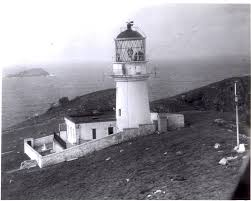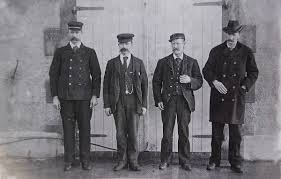By Abir Mahmud
(FACT: Three lighthouse keepers disappeared out of nowhere in 1900 off the west coast of mainland Scotland)
The Flannan Isles, also known as “the seven hunters,” is a group of uninhabited rocky islands off the western coast of Scotland. The mysterious island allegedly had an effect on sheep and shepherds and they would sail their flocks to the island to live. Sheep who ate the grass on the island were said to give birth to twins or to recover from illness. Despite its positive effect on sheep, the legend of a spirit haunting the islands kept any shepherd from staying overnight.
Nevertheless, in 1896, the regional board of trade approved the construction of a lighthouse on the largest of the Flannan islands, Eilean Mor. Eilean Mor is also home to some “bothies”—a Scottish term for a small hut that now sits in disrepair—as well as the Chapel St. Flannan, named after the islands. In December of 1899, the lighthouse was completed and lit for the first time. Four lighthouse keepers were assigned to the lighthouse, each would work a rotation of six weeks on, two weeks off. This meant there were always three men on the island working the lighthouse at the same time.
In Mid- December 1900, one year after the lighthouse was put in service, three men were stationed on the island. James Ducat was the 43-yr-old principle keeper, with a wife, 4 children, and 20 years of experience. Donald McArthur was the married 40-yr-old occasional keeper who was covering for the first assistant keeper who was sick. The third was Thomas Marshal, the second assistant keeper. He was the youngest of the trio at 28. A fourth keeper, Joseph Moore, wasn’t on the island as it was his scheduled two weeks off.
Around midnight on December 15th, the steamship Archtor passed near the Flannan Isles. Captain Holman, captain of the Archtor, noted that he could not see the warning light, though weather conditions should have allowed him to. When the Archtor arrived in port, it reported the absence of the light, though this was never communicated to the Northern Lighthouse board. On December 26th, the lighthouse tender ship Hesperus made a visit to Eilean Mor. When approaching the island, Captain James Harvey found it odd that there was no flag on the flag pole.
The Hesperus sounded its horn to try to get the attention of the three lighthouse keepers but there was no response. They attempted firing a flare, again, no reply. Joseph Moore, the fourth lighthouse keeper, was onboard the Hesperus. With no signal from the island, Moore was sent ashore. Upon arriving at Eilean Mor’s east landing, nothing appeared odd. Everything was where it had been where Moore had last been on the island, Moore made his way up the island where he found the entrance gate, the entrance door, and the door after that all closed. The kitchen door was found open however and the fireplace had not been lit for several days. All of the clocks were stopped. According to Moore, “I then entered the rooms in succession found the beds empty just as they left them in the early morning.” With no sign of anyone Moore realized something was seriously wrong and returned to the Hesperus to get more men to help him investigate.
They found the lamp of the lighthouse in working order, but there was no clue as to what had happened to the three missing men. Moore and three others were left on the island to operate the lighthouse, while the Hesperus sailed back to Inform the Northern Lighthouse Board about the mysterious dIsappearance.

